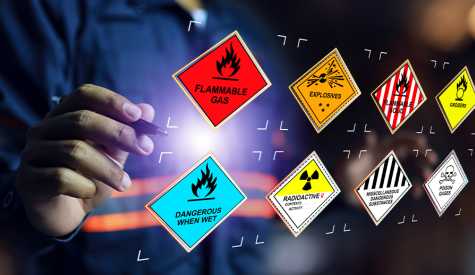What EHS Leaders Are Prioritizing — and Dropping — in 2026.

EHS leaders aren’t waiting for the future, they’re building it. With tighter regulations, sustainability demands, and growing pressure to do more with less, the best teams are rethinking how safety gets done. 2026 isn’t about adding more tools. It’s about using smarter ones. Here’s what they’re focusing on, and what they’re leaving behind.
Key Takeaway
In fall 2025, top EHS teams are replacing disconnected tools with connected systems that centralize data, automate training, and improve hazard response. The focus is on AI, faster decisions, targeted actions, and real-time visibility. Strategies that rely on paper checklists, outdated dashboards, or one-size-fits-all training are being left behind.
Why are EHS strategies changing in 2026?
EHS leaders are investing in systems that centralize operations, connect insights, and respond in real-time. As OSHA’s Program Evaluation and Improvement guidance notes, the best programs monitor performance and correct shortcomings quickly. This resource reinforces it with its research on leading indicators, showing how predictive data helps organizations act before incidents occur.
The old way, manual tracking, static reports, disconnected training, puts companies at risk. Modern safety leaders know that lag kills performance. They're designing programs that move faster, scale cleaner, and adapt to what the data says.
This shift isn’t a trend. It’s a response to five persistent challenges:
Delayed incident response
Overwhelming compliance complexity
Disengaged frontline reporting
Siloed ESG and EHS functions
Generic corrective actions that fail to prevent recurrence
To understand how EHS leaders are addressing these challenges, it helps to first look at what they’ve chosen to leave behind as they move into 2026.
What’s being removed from EHS programs?
Outdated systems aren't just inefficient, they’re dangerous. Here's what safety leaders are actively phasing out:
Spreadsheet-based inspections and audits: Manual checklists miss trends. Even well-kept spreadsheets introduce data loss through copy/paste errors and version conflicts. Once you hit three sites, it's unmanageable.
Legacy LMS tools: Older training platforms often can’t link course outcomes to real-world incidents. OSHA’s Training Development Resource (OSHA 3824) emphasizes that training should align with hazard assessments and incident findings, something legacy systems can’t track.
Static safety dashboards: Dashboards built around pre-set metrics fail to capture real-time movement. They're useful for board meetings, not daily decisions. The Campbell Institute’s Practical Guide to Leading Indicators highlights the need for live, predictive metrics instead of lagging data snapshots.
Disconnected ESG tracking: Many teams still run ESG programs in parallel to safety, using siloed platforms, or worse, custom Excel templates. That creates blind spots and compliance gaps.
Training without context: When incident follow-up leads to a generic “refresher course,” it shows a broken feedback loop. OSHA’s Incident Investigations Guide advises that employers use root cause findings to create targeted corrective training, not broad refreshers.
With outdated systems out of the way, the question becomes: what are safety leaders using instead? The answer isn't just better tools, it's smarter, more connected ways of working.

What tools are redefining EHS leadership?
EHS leaders are upgrading the way safety, training, and ESG work together. Here’s what’s setting the new standard.
1. Connected EHS Systems
Modern systems combine training, inspections, incidents, hazard recognition, and ESG tracking into one interface. This isn’t just about integration, it’s about correlation.
A strong system lets leaders answer questions like:
Which training gaps lead to higher incident rates?
What types of hazards recur across regions or shifts?
Where are we out of compliance by location, team, or task?
2. AI-driven corrective training
This is one of the biggest game-changers. Let’s say an employee fails to wear required PPE. The system logs the hazard, and AI automatically recommends a targeted PPE training module, based on job role, previous completions, and incident severity. No manual lookup. No waiting for a monthly review. It’s precision training, delivered within hours.
3. Mobile-first reporting
Frontline reporting rates improve when the process is built around the worker, not the office. Tools that allow voice notes, image uploads, and quick hazard tagging lead to faster reporting and better data quality. OSHA’s Worker Participation framework recommends simple, accessible reporting systems that protect workers from retaliation, something mobile tools make easier.
4. Hazard image analysis
Smart safety leaders are testing tools that scan job site photos for hazards. These AI systems identify things like ladder misuse, missing guards, or improper PPE based on visual cues, and prompt a flag or intervention. It’s not about replacing humans but surfacing what busy eyes might miss.
5. Real-time ESG modules
Newer ESG systems simplify carbon reporting (Scope 1, 2, and some 3 emissions) by automating inputs from energy use, fleet fuel, and manufacturing data. Leaders can track waste metrics, set reduction goals, and prep audit-ready disclosures, all from the same system that manages their safety program.
These tools are powerful, but they work best when your data isn’t scattered. That’s why the next priority is centralization.
What’s driving the move to data centralization?
Modern EHS leaders treat data as a system of action, not just recordkeeping. As OSHA’s Hazard Identification and Assessment and Hazard Prevention and Control guidelines emphasize, proactive controls depend on accurate, unified data. When inspection findings, incident reports, training data, and risk scores all live in one platform, you can uncover patterns that lead to stronger decisions.
Centralized systems enable:
Root cause clarity: Map incident trends to training gaps, shifts, or specific hazards.
Faster escalations: Route critical safety issues to the right person in real time.
Smarter resource allocation: Invest in controls where the data shows the highest risk.
Cross-team alignment: Safety, compliance, and ESG teams can work from the same baseline.
Compare that to a typical non-centralized legacy setup where audit data sits in a cloud folder, training data in an LMS, Chemical, and ESG reporting in a quarterly PDF. That kind of fragmentation doesn't just slow teams down, it blocks the insights that drive real improvement. HSI helps fix that with a system designed for speed, connection, and control.
How HSI helps teams make the 2026 leap
To move faster, train smarter, and prevent more incidents, you need more than just another software. You need a system that connects your safety, ESG, and compliance programs, without slowing you down.
That’s what HSI delivers!
HSI brings everything together in one platform built for the realities of modern safety teams. Whether you're running one site or managing global operations, our tools give you real-time visibility and the power to act when it matters most.
Here’s how:
HSI Intelligence: Our built-in AI helps you make better calls, faster. It recommends training after incidents, flags hazards in images, and offers expert-backed guidance aligned with OSHA and EU-OSHA standards. It’s like having a safety advisor on call, 24/7.
Smarter training, driven by data: Our LMS goes beyond tracking completions. It helps you assign the right content based on real events, employee roles, and training history. You get clear paths for learning, and fewer knowledge gaps in the field.
Designed for the frontline: Mobile-friendly tools make it easy for workers to report hazards, log near misses, and stay engaged in your safety program. No back-office bottlenecks. Just quick, effective reporting that supports OSHA’s frontline engagement goals.
Built-in ESG tracking: Our GHG Management Module simplifies carbon and waste reporting for small and mid-sized teams. It’s aligned with EPA and GHG Protocol standards, so you stay compliant without spreadsheets or guesswork.
With HSI, you don’t need five systems. You just need one that works.
Start now. Talk to our team and see how HSI can help you lead in 2026.


